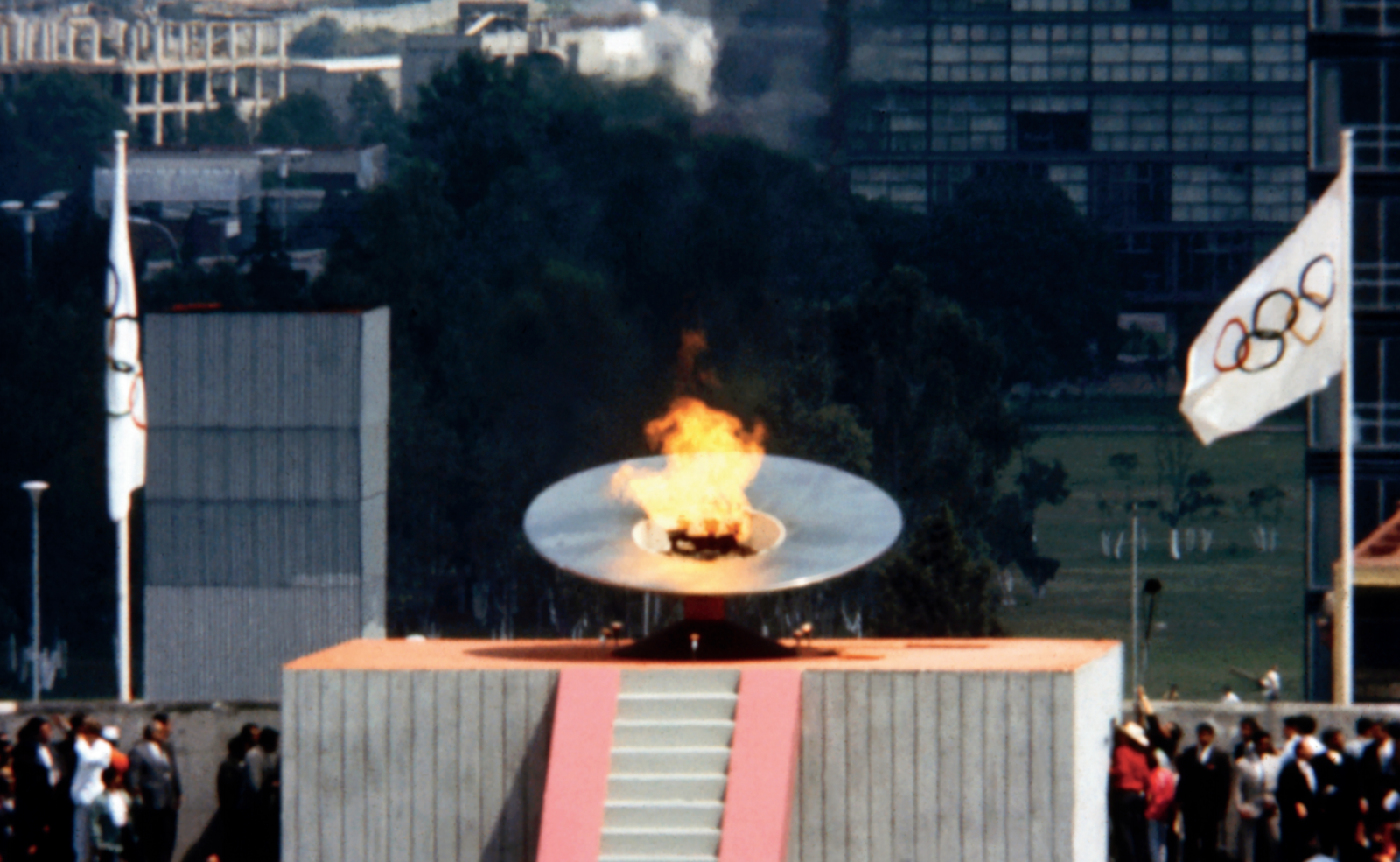A City Immersed: Eduardo Terrazas // MEXICO 1968
by Stephanie Cristello

“The twentieth century began with a futuristic utopia and ended with nostalgia,” wrote Svetlana Boym in her 2001 publication The Future of Nostalgia. It is precisely between these two markers that we can critically view the undertaking of the 1968 world Olympics held in Mexico City, whose team was headed by artist Eduardo Terrazas. The commission exists today as a singular example of immersive design within an urban context.
During the Olympics, there was not a facet of city’s environment left untouched. Transparent balloons colonized the airports; banners lined the streets, glimmering in the eyes of passengers within each passing car; the plazas surrounding the stadiums were treated as expansive swaths of canvas, transformed into seas of pattern; figures performing each of the Olympian sports, resembling Bauhaus caricatures painted in a vibrant palette, were erected as massive public monuments. The font developed for the identity—an alphabet and numerical system that recalls an Op aesthetic, but was in fact derived from traditional indigenous Mexican arts and crafts, such as Huichol weavings— remains iconic, the logo itself composed of concentric circles that radiate from the five Olympic rings. Mexico 1968. It was both a time and a site, an image and a dream.
It has been nearly 500 years since noted Renaissance humanist Sir Thomas More gave a term to the vision of humanity’s return to Paradise—the want of establishing Heaven on Earth: ‘Utopia.’ Derived from the Greek word topos (a polis, a city, a state), utopia has come to mean different things in our recent past. In 1967, just one year before the Mexico City Olympics, Foucault wrote of ‘heterotopias,’ real sites that oppose the fundamentally unreal places of utopia. Mirrors, cemeteries, museums, libraries. Mexico City could have been said to belong to the same order.
To create an entire city that can be consumed as an image is a heterotopic act. Yet, to gaze upon this image in our twenty-first-century moment is also an act that undergoes another facet of engaging with utopia; of connecting with fictionalized place. In his 2017 publication Retrotopia, Zygmunt Bauman argues that nostalgia is perhaps just one of the affects born out of imagining this ‘elsewhere.’ The vernacular image of the late 1960s, like an apparition of high-modernist style projected in technicolor, is a prime instance of what he describes as “visions located in the lost/ stolen/abandoned but undead past.”4 Bauman argues for the dissolve of the thought that utopia in any format can exist as a fixed place—a sentiment that instead favors a detached, fragmented, and individualized dream. What could be a more fitting model of retrotopia than Mexico City in 1968, whose image was experienced differently, both privately and personally, by every civilian and athlete enmeshed within its image?
The following insert is comprised of documentation, much unpublished to date, of the graphic and architectural identity enacted during the 1968 Mexico City Olympics, from the studio of Eduardo Terrazas. The spreads are purposefully left untouched and without words of further context so that they may pass the reader’s vision—unaffected, an image of time, a false memory.
To view the Special Edition Insert, download the PDF.